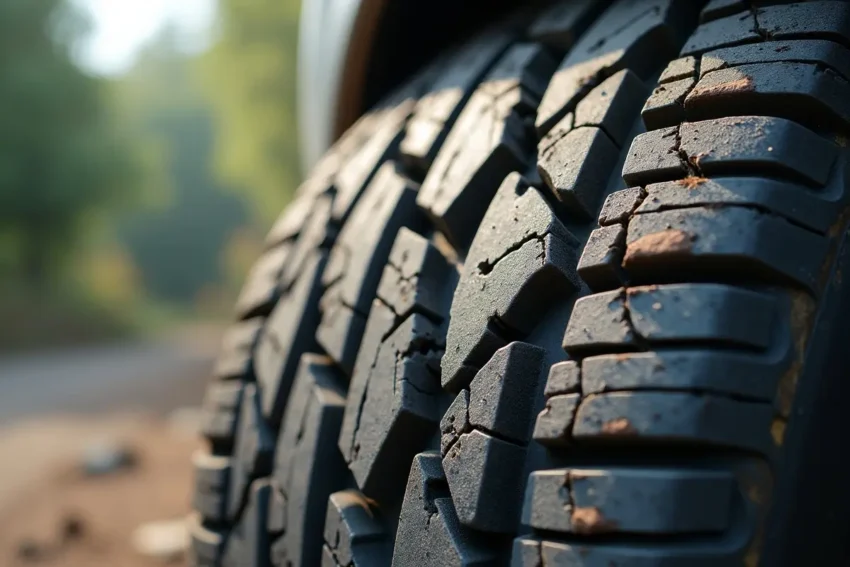You walk past your car and notice thin cracks on the side of your tires. They weren’t there before, and now you’re wondering what they mean. These cracks are more than just cosmetic; they can be signs of aging rubber, and Hughes & Coleman would agree: it’s something you shouldn’t ignore.
Understanding Tire Sidewalls
The sidewall is the outer side of your tire that faces outward from the vehicle. It’s made of flexible rubber designed to absorb road impact and provide stability. While it’s durable, it doesn’t last forever.
Over time, the rubber can begin to degrade. This aging process shows up in the form of small cracks. They’re often a warning that your tires are no longer in peak condition.
These cracks may look minor at first, but can become serious quickly. If left unaddressed, they can compromise the safety and performance of your vehicle. That’s why understanding their cause is important.
What Causes Sidewall Cracks?
Rubber naturally breaks down over time, even if the tire isn’t being used much. Sunlight, temperature changes, and ozone exposure all contribute to this process. These environmental factors cause the rubber to dry out and become brittle.
Driving habits also play a role. If you regularly carry heavy loads or drive on rough roads, it puts more stress on the sidewalls. Stress can accelerate the cracking process.
Even tire age matters. Most tires begin to show signs of wear after about 5 to 7 years, regardless of mileage. So, even if they “look fine,” they may not be safe.
How To Spot Aging Rubber
Start by visually inspecting the sidewalls of each tire. Look for thin, spiderweb-like cracks running along the surface. These are early signs of weathering.
In more advanced cases, the cracks will be more profound and more widespread. You might also see them around the tread or near the bead — where the tire meets the rim.
If you notice these signs, it’s time to take action. Waiting too long can lead to more hazardous situations, such as blowouts or tire failure.
Are All Cracks A Cause For Concern?
Not all cracks mean your tire will fail immediately. Tiny, shallow surface cracks are common in older tires and don’t always mean they’re unsafe. However, they do note that the rubber is starting to age.
If the cracks are deeper or more than superficial, they can allow moisture and air into the tire’s inner layers. This weakens the structure from the inside out.
It’s best to have a professional inspect your tires if you’re unsure about their condition. They can tell you whether it’s time to replace them or if they’re still roadworthy.
How To Slow Down The Aging Process
While you can’t stop rubber from aging, you can slow down its aging process. Park your car in a garage or shaded area to limit sun exposure. UV rays accelerate the breakdown of rubber.
Keep your tires properly inflated. Under- or over-inflation adds stress to the sidewalls and can worsen cracking. Regular pressure checks go a long way.
Additionally, avoid letting your car sit idle for extended periods without being driven. Stationary tires age faster, especially in extreme temperatures. Driving your vehicle regularly helps distribute tire pressure evenly and keeps the rubber flexible.
When Is It Time To Replace Cracked Tires?
If your tires are over six years old and showing cracks, it’s usually time for a replacement. The rubber may still grip the road, but its internal structure may be compromised.
If cracks are deep enough to see the cords inside the tire, replacement is urgent. These tires are at high risk of failure while driving. It’s not worth gambling with your safety. New tires might seem expensive, but they’re a small price to pay for peace of mind, especially when the alternative could be dangerous, or even life-threatening.
Conclusion
Sidewall cracks aren’t just a cosmetic flaw; they’re your tire’s way of telling you it’s getting old. Paying attention to them now can save you from a much bigger problem later. For your safety and the safety of others on the road, even Hughes & Coleman would agree it’s best to stay ahead of tire trouble.

